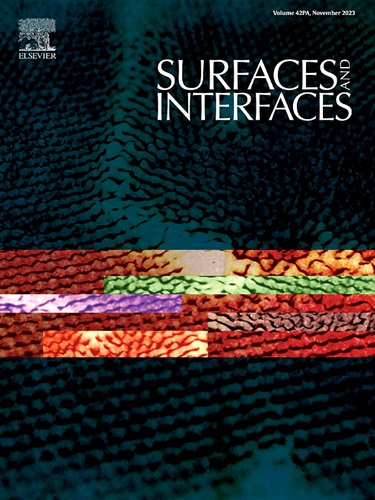Volume compensation directed enhanced photoluminescence in Li+ Co-doped Y4Al2O9:Eu3+ phosphors for solid state lighting applications
IF 5.7
2区 材料科学
Q2 CHEMISTRY, PHYSICAL
引用次数: 0
Abstract
Rare-earth activated red phosphors have become the indispensable component for the generation of warm white light from phosphor converted white light emitting diodes (PC WLEDs). Eu3+ doped Yittrium based hosts are considered as the highly promising red phosphors and thus have widely been investigated in the last few years. However, The mismatch in the size of Eu3+ and Y3+ restricts their PL enhancement below the desired limit. Herein, Li+ co-activated Y4Al2O9:Eu3+ phosphors have been synthesized via facile solvothermal technique. All the phosphors exhibit characteristic 5D0 → 7Fj (j=1–4) transitions of Eu3+ and introduction of Li+ co-activator results in nearly 2.5 fold enhancement of PL intensity as compared to pristine Y4Al2O9:Eu3+ phosphors. Moreover, both the excited state lifetime and thermal stability of the phosphors are remarkably improved upon Li+ co-activation. The enhancement in PL efficiency has been explained in light of volume compensation induced lattice relaxation mechanism. Strong red emission was achieved by the red LED fabricated by employing Li+ co-activated Y4Al2O9 : Eu3+ phosphors under 3 Volt driving potential. The demonstrated volume compensation technique possesses great promise to play the pivotal role in designing highly luminescent phosphors for LED applications.

求助全文
约1分钟内获得全文
求助全文
来源期刊

Surfaces and Interfaces
Chemistry-General Chemistry
CiteScore
8.50
自引率
6.50%
发文量
753
审稿时长
35 days
期刊介绍:
The aim of the journal is to provide a respectful outlet for ''sound science'' papers in all research areas on surfaces and interfaces. We define sound science papers as papers that describe new and well-executed research, but that do not necessarily provide brand new insights or are merely a description of research results.
Surfaces and Interfaces publishes research papers in all fields of surface science which may not always find the right home on first submission to our Elsevier sister journals (Applied Surface, Surface and Coatings Technology, Thin Solid Films)
 求助内容:
求助内容: 应助结果提醒方式:
应助结果提醒方式:


